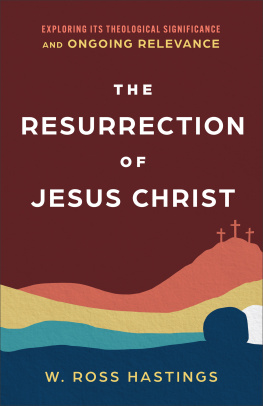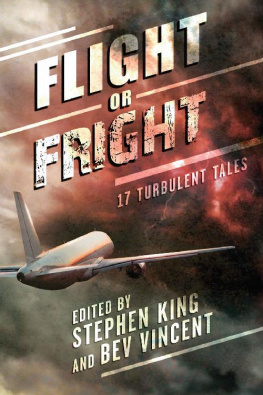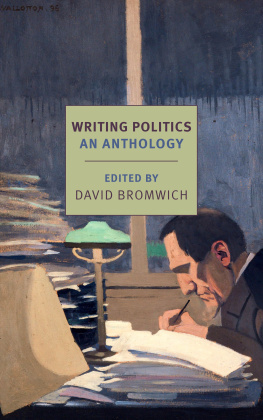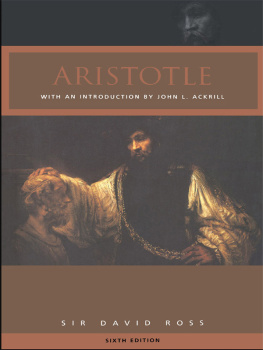ART AND ITS
SIGNIFICANCE
Third Edition
ART AND ITS
SIGNIFICANCE
An Anthology of Aesthetic Theory
THIRD EDITION
Edited by
Stephen David Ross

Published by
State University of New York Press, Albany
1994 State University of New York, THIRD EDITION
All rights reserved
Printed in the United States of America
No part of this book may be used or reproduced in any manner whatsoever without written permission except in the case of brief quotations embodied in critical articles and reviews.
For information, contact State University of New York Press, Albany, NY www.sunypress.edu
Production by Marilyn P. Semerad
Marketing by Nancy Farrell
Library of Congress Cataloging-in-Publication Data
Art and its significance: an anthology of aesthetic theory / edited by Stephen David Ross. 3rd ed.
p. cm.
Includes bibliographical references.
ISBN-13: 978-0-7914-1852-9
ISBN 0-7914-1852-9
1. Aesthetics. 2. ArtPhilosophy. I. Ross, Stephen David.
BH39.A69 1994
701.17dc20 93-43609
CIP
20 19 18 17
CONTENTS
.
PREFACE
The philosophy of art, including the theory of interpretation, has been among the most productive branches of philosophy in the latter half of the twentieth century. Remarkable, interesting, and important work has emerged from both sides of the Atlantic, and elsewhere, from all the sources of philosophic thought. A collection is needed that includes the best of contemporary writings as well as the most important works of the past hundred years and the major writings from the Western tradition. This collection has been designed to fill that need.
There is enough here for more than one course on the theory of art. Material drawn from the most important Continental writers is supplemented by the historical selections and the writings of psychologists and artists; some important and interesting works of contemporary Anglo-American writers are included. But the course that this collection is specifically designed to serve is one that draws from every available source for our understanding of art: from the major writings in the Western philosophical tradition, from contemporary American, Continental, British, and nonWestern philosophers, and from psychologists and artists.
This is primarily a theory-based collection. I have chosen works less for the conflict of their arguments and more for the theories they offer concerning the nature of art and how we are to understand it. There are, however, a few less theoretical selections in that are important in contemporary discussions of the philosophy of art.
The selections in expanded for this edition, primarily from The Truth in Painting, also including one of his most interesting provocations, his letter to Peter Eisenman on architecture.
Part IV has again been expanded for this edition to include a wider range of contemporary discussions. All the selections from material is very controversial. It also raises important issues.
The materials from artists that close the anthology remain relatively limited, primarily from manifestoes in early twentieth-century plastic art, to introduce questions, largely of a political nature, concerning the relationship of art to society and human experience. There are more illuminating writings by artists, but few that are quite so provocative as the ones included here, and few that so sharply define modernism. I have limited the writings of artists to the plastic arts to focus them more tightly.
I remain convinced that minimal editorial intervention is best, even with such difficult readings, that strong editorial readings may interfere with the relation of the reader to the text or of the teacher to the class. Very minor changes in introductory material have been made for this edition.
I have made great efforts to provide a comprehensive collection. I hope even more to have made it interesting.
Finally, a topic of grave importance for art of our time and for humanity is not addressed in this collection, and its absence cannot be left in silence. AIDS, its thought and its reality, has opened deep wounds in communities concerned with art and culture, especially in the West. The deaths of so many people from AIDS is a tragedy worldwide. The loss of so many artists, performers, and critics is a cultural disaster. In the age of AIDS, Western artists face death incessantly.
ACKNOWLEDGMENTS
Oxford University Press
Reprinted by permission of Oxford University Press: from G. W. F. Hegel, Aesthetics: Lectures on Fine Art, translated by T. M. Knox, 2 vols., copyright 1975 by Oxford University Press; from Leo Tolstoy, What is Art?, translated by Louise and Aylmer Maude, 1930; from R. G. Collingwood, The Principles of Art, 1938; from The Dialogues of Plato, translated by Benjamin Jowett, 3rd ed., 1892; from The Oxford Translation of Aristotle, edited by W. D. Ross, vol. 9, 1925 (Nicomachean Ethics, translated by W. D. Ross; Poetics, translated by Ingram Bywater), reprinted in the United States, with the permission of Oxford University Press, by Random House, New York.
Macmillan
Reprinted by permission of Macmillan Publishers, Inc., New York, from Immanuel Kant, Critique of Judgment, translated by J. H. Bernard, Hafner, 1951.
Random House
Reprinted by permission of Random House, Inc., New York: from Michel Foucault, The Order of Things: An Archaeology of the Human Sciences, translation of Les mots et les choses, Pantheon, 1970; from Friedrich Nietzsche, The Birth of Tragedy and The Case of Wagner, translated by Walter Kaufmann, 1967.
Putnam
Reprinted by permission of G. P. Putnams Sons, New York, from Clive Bell, Art, originally published 1914, reprinted Capricorn, 1958; from John Dewey, Art as Experience, copyright 1934 by John Dewey, renewed 1962.
British Psychological Society
Reprinted by permission of the British Psychological Society, from Psychical Distance as a Factor in Art and as an Aesthetic Principle, British Journal of Psychology, 1912, pp. 87-98.
Journal of Philosophy
The Artworld, reprinted by permission of the Journal of Philosophy, 1964, pp. 571-584.
Basic Books
Reprinted by permission of Basic Books, Inc., New York, from Sigmund Freud, The Relation of the Poet to Day-dreaming, translated by I. F. Grant Duff, in Collected Papers, vol. 4, pp. 173-183.
Harcourt Brace Jovanovich
Reprinted by permission of Harcourt Brace Jovanovich, New York, from Carl G. Jung, Psychology and Literature, translated by W. S. Dell and Cary F. Baynes, in Modern Man in Search of a Soul, 1955. Reprinted by permission of Harcourt Brace Jovanovich and Jonathan Cape Ltd., from Illuminations by Walter Benjamin, translated by Harry Zohn, English copyright 1968.
MIT Press
Reprinted by permission of MIT Press, Cambridge, Massachusetts, from Lev Vygotsky, Psychology of Art, 1971. From James Clifford, On Collecting Art and Culture, in Out There: Marginalization and Contemporary Culture. Edited by Russell Ferguson, Martha Bever, Trinh T. Minh-ha, Cornell West. Foreword by Marcia Tucker. Copyright 1990 by The New Museum of Contemporary Art and MIT Press. Reprinted by permission of MIT Press and Assemblage, from Jacques Derrida, A Letter to Peter Eisenman, in Assemblage
Next page









